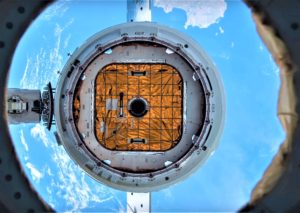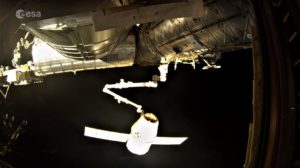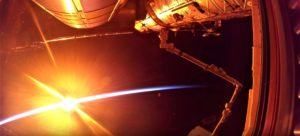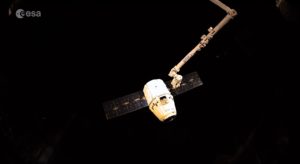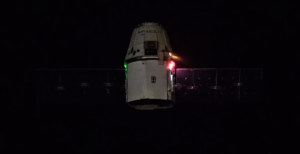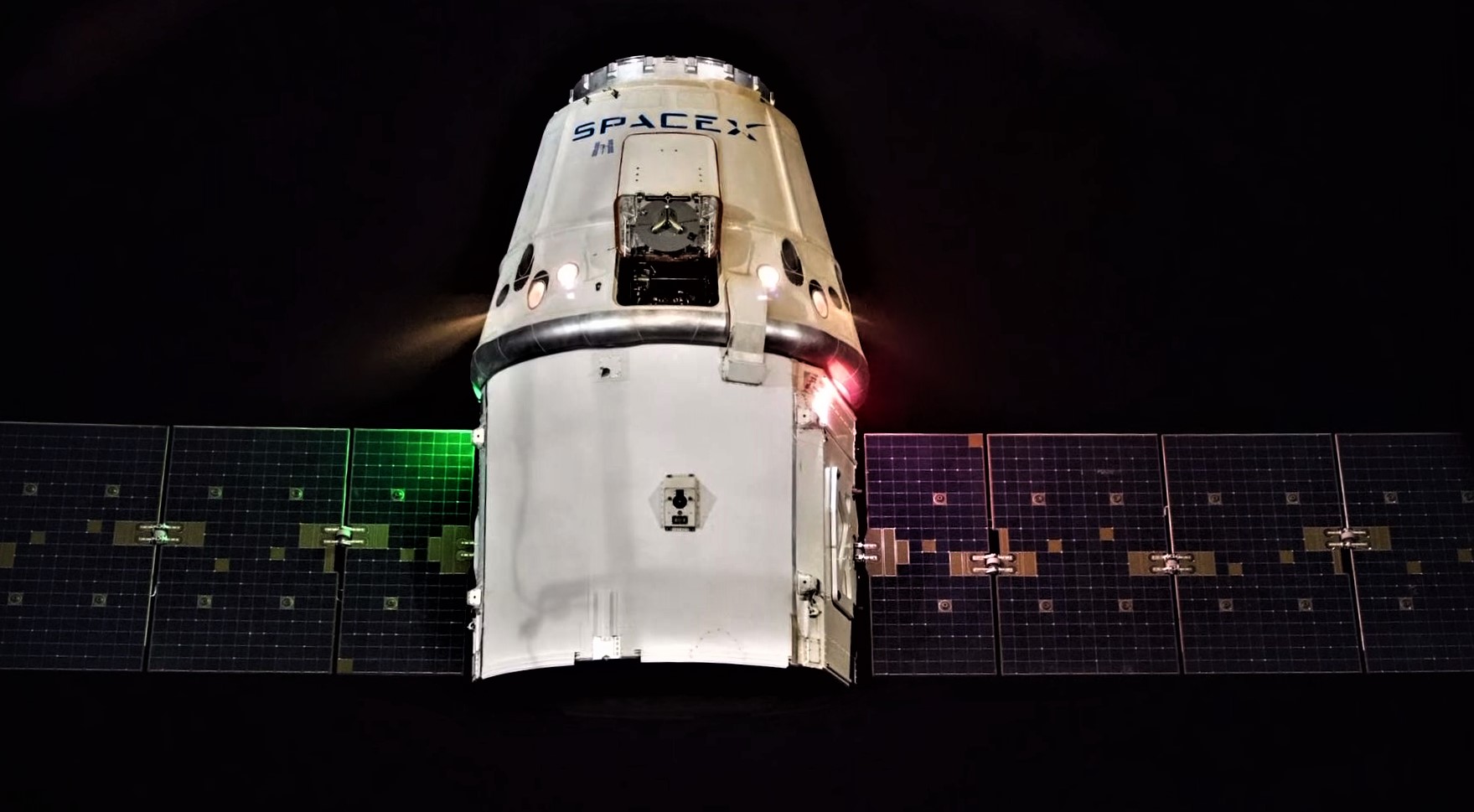
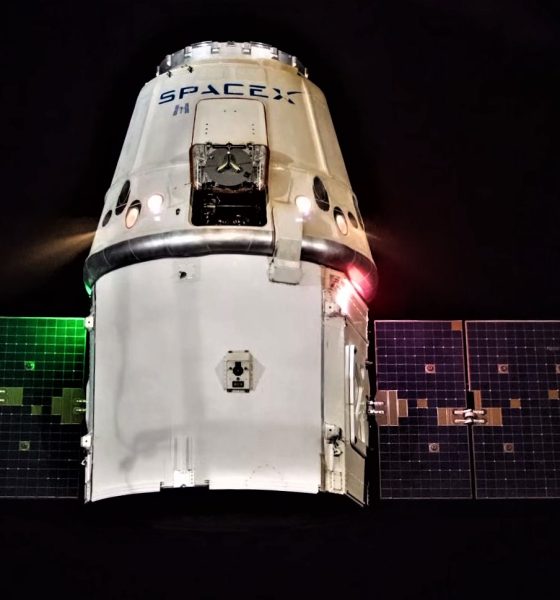
News
SpaceX’s Dragon spacecraft fires thrusters to depart a space station in 4K timelapse
The European Space Agency (ESA) has published perhaps the best footage yet of SpaceX’s storied Cargo Dragon spacecraft, in this case taking the form of an exceptionally well-produced, simple, and blindingly high-resolution series of timelapses of the most recent vehicle’s early-August departure from the International Space Station.
Placed in orbit in late June 2018 atop SpaceX’s last-ever launch of a non-Block 5 Falcon 9 rocket, Cargo Dragon CRS-15 (and capsule C111) successfully made its way to the International Space Station for the second time, marking a total of almost 5 metric tons (~11,000 lb) of cargo delivered to the ISS and its astronaut complement. After just over a month spent “on-station”, ISS crew carefully extricated Cargo Dragon from its berth using the station’s famous Canadarm, a giant external arm built by Canadian aerospace company Maxar Technologies.
After gently pushing the orbital spacecraft away from the ISS and releasing its grip, Dragon took full control of its own guidance, using four groups of 18 total Draco thrusters to orient itself and safely depart the Station, headed Earthward. Capable of producing roughly 90 lbs (~41 kg) of thrust, each thruster firing can essentially be compared to an average adult giving a stationary car a healthy push, albeit if the car in question was utterly untethered by Earthly concerns like “friction” and “gravity”.
- SpaceX’s CRS-15 Cargo Dragon departs the ISS after a successful month in orbit. (ESA)
- Dragon glows golden in the twilight of orbital sunset. (ESA)
- Orbital sunrise greets Cargo Dragon just prior to unlatching. (ESA)
- Canadarm releases Dragon. (ESA)
- A concert of Draco thrusters work to push Dragon away from the ISS and back towards Earth. (ESA)
- Moar thruster firings. (ESA)
- Dragon sinks into the abyss. (ESA)
Whereas an average person would be lucky to move a car on flat ground more than a smidge with just their strength alone, Cargo Dragon’s array of Draco thrusters can quite easily – if gradually – jet the spacecraft about, eventually going through a series of more concerted burns to dip Dragon into Earth’s atmosphere, culminating in a successful reentry, ocean splashdown, and (hopefully) refurbishment before another orbital mission. In fact, the movement caused by Dragon’s Draco thrusters is visible in an absolutely extraordinary fashion, normally taking place on timescales only subtly perceptible to the average naked eye.
ESA astronauts appear to have been quietly producing a huge array of extraordinary orbital timelapses – including the above footage of Dragon – that very few people have viewed. Ranging from the arrival and departure of other cargo and crew spacecraft to pure timelapses of orbital sunrise and sunset, check out ESA’s hidden gems at their YouTube channel.
Meanwhile, SpaceX continues to work around the clock to prepare its next generation Dragon 2‘s crew and cargo variants for their various launch debuts, with Crew Dragon leading the pack towards an uncrewed launch demonstration scheduled for November 2018 and a crewed flight test as early as April 2019.
For prompt updates, on-the-ground perspectives, and unique glimpses of SpaceX’s rocket recovery fleet check out our brand new LaunchPad and LandingZone newsletters!

News
Tesla starts showing how FSD will change lives in Europe
Local officials tested the system on narrow country roads and were impressed by FSD’s smooth, human-like driving, with some calling the service a game-changer for everyday life in areas that are far from urban centers.

Tesla has launched Europe’s first public shuttle service using Full Self-Driving (Supervised) in the rural Eifelkreis Bitburg-Prüm region of Germany, demonstrating how the technology can restore independence and mobility for people who struggle with limited transport options.
Local officials tested the system on narrow country roads and were impressed by FSD’s smooth, human-like driving, with some calling the service a game-changer for everyday life in areas that are far from urban centers.
Officials see real impact on rural residents
Arzfeld Mayor Johannes Kuhl and District Administrator Andreas Kruppert personally tested the Tesla shuttle service. This allowed them to see just how well FSD navigated winding lanes and rural roads confidently. Kruppert said, “Autonomous driving sounds like science fiction to many, but we simply see here that it works totally well in rural regions too.” Kuhl, for his part, also noted that FSD “feels like a very experienced driver.”
The pilot complements the area’s “Citizen Bus” program, which provides on-demand rides for elderly residents who can no longer drive themselves. Tesla Europe shared a video of a demonstration of the service, highlighting how FSD gives people their freedom back, even in places where public transport is not as prevalent.
What the Ministry for Economic Affairs and Transport says
Rhineland-Palatinate’s Minister Daniela Schmitt supported the project, praising the collaboration that made this “first of its kind in Europe” possible. As per the ministry, the rural rollout for the service shows FSD’s potential beyond major cities, and it delivers tangible benefits like grocery runs, doctor visits, and social connections for isolated residents.
“Reliable and flexible mobility is especially vital in rural areas. With the launch of a shuttle service using self-driving vehicles (FSD supervised) by Tesla in the Eifelkreis Bitburg-Prüm, an innovative pilot project is now getting underway that complements local community bus services. It is the first project of its kind in Europe.
“The result is a real gain for rural mobility: greater accessibility, more flexibility and tangible benefits for everyday life. A strong signal for innovation, cooperation and future-oriented mobility beyond urban centers,” the ministry wrote in a LinkedIn post.
News
Tesla China quietly posts Robotaxi-related job listing
Tesla China is currently seeking a Low Voltage Electrical Engineer to work on circuit board design for the company’s autonomous vehicles.

Tesla has posted a new job listing in Shanghai explicitly tied to its Robotaxi program, fueling speculation that the company is preparing to launch its dedicated autonomous ride-hailing service in China.
As noted in the listing, Tesla China is currently seeking a Low Voltage Electrical Engineer to work on circuit board design for the company’s autonomous vehicles.
Robotaxi-specific role
The listing, which was shared on social media platform X by industry watcher @tslaming, suggested that Tesla China is looking to fill the role urgently. The job listing itself specifically mentions that the person hired for the role will be working on the Low Voltage Hardware team, which would design the circuit boards that would serve as the nervous system of the Robotaxi.
Key tasks for the role, as indicated in the job listing, include collaboration with PCB layout, firmware, mechanical, program management, and validation teams, among other responsibilities. The role is based in Shanghai.
China Robotaxi launch
China represents a massive potential market for robotaxis, with its dense urban centers and supportive policies in select cities. Tesla has limited permission to roll out FSD in the country, though despite this, its vehicles have been hailed as among the best in the market when it comes to autonomous features. So far, at least, it appears that China supports Tesla’s FSD and Robotaxi rollout.
This was hinted at in November, when Tesla brought the Cybercab to the 8th China International Import Expo (CIIE) in Shanghai, marking the first time that the autonomous two-seater was brought to the Asia-Pacific region. The vehicle, despite not having a release date in China, received a significant amount of interest among the event’s attendees.
Elon Musk
Elon Musk and Tesla AI Director share insights after empty driver seat Robotaxi rides
The executives’ unoccupied tests hint at the rapid progress of Tesla’s unsupervised Robotaxi efforts.

Tesla CEO Elon Musk and AI Director Ashok Elluswamy celebrated Christmas Eve by sharing personal experiences with Robotaxi vehicles that had no safety monitor or occupant in the driver’s seat. Musk described the system’s “perfect driving” around Austin, while Elluswamy posted video from the back seat, calling it “an amazing experience.”
The executives’ unoccupied tests hint at the rapid progress of Tesla’s unsupervised Robotaxi efforts.
Elon and Ashok’s firsthand Robotaxi insights
Prior to Musk and the Tesla AI Director’s posts, sightings of unmanned Teslas navigating public roads were widely shared on social media. One such vehicle was spotted in Austin, Texas, which Elon Musk acknowleged by stating that “Testing is underway with no occupants in the car.”
Based on his Christmas Eve post, Musk seemed to have tested an unmanned Tesla himself. “A Tesla with no safety monitor in the car and me sitting in the passenger seat took me all around Austin on Sunday with perfect driving,” Musk wrote in his post.
Elluswamy responded with a 2-minute video showing himself in the rear of an unmanned Tesla. The video featured the vehicle’s empty front seats, as well as its smooth handling through real-world traffic. He captioned his video with the words, “It’s an amazing experience!”
Towards Unsupervised operations
During an xAI Hackathon earlier this month, Elon Musk mentioned that Tesla owed be removing Safety Monitors from its Robotaxis in Austin in just three weeks. “Unsupervised is pretty much solved at this point. So there will be Tesla Robotaxis operating in Austin with no one in them. Not even anyone in the passenger seat in about three weeks,” he said. Musk echoed similar estimates at the 2025 Annual Shareholder Meeting and the Q3 2025 earnings call.
Considering the insights that were posted Musk and Elluswamy, it does appear that Tesla is working hard towards operating its Robotaxis with no safety monitors. This is quite impressive considering that the service was launched just earlier this year.
